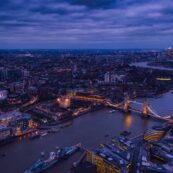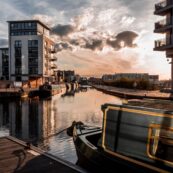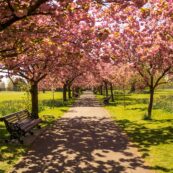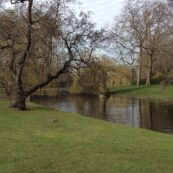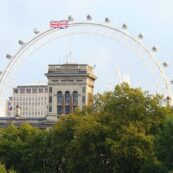
Urban Greening: London as an Example – How the City is Leading a Sustainable Future
Urban greening refers to the process of integrating natural elements-like trees, parks, gardens, and green roofs-into densely populated urban areas. In a world facing rapid urbanization, pollution, and climate change, cities must adapt to become more livable and resilient. London, one of the world’s most vibrant metropolises, stands out as a leading example of how urban greening can transform a city’s landscape, improve its air quality, and uplift its citizens’ quality of life.
Why Urban Greening Matters in the 21st Century
The Role of Green Infrastructure in Urban Environments
Urban greening is not merely about aesthetics. It’s a critical infrastructure investment that combats rising temperatures, reduces carbon emissions, and enhances biodiversity. Green spaces act as the city’s lungs-absorbing pollutants and releasing oxygen while mitigating the urban heat island effect.
Environmental, Social, and Economic Benefits of Urban Greening
Green areas contribute to improved mental and physical health, encourage outdoor activities, and strengthen community ties. Economically, they can boost tourism, increase property values, and attract investment. Moreover, green infrastructure helps cities adapt to climate change by managing stormwater and improving air quality.
London’s Journey Toward a Greener City
Historical Overview of London’s Green Spaces
London’s relationship with nature dates back centuries. From the royal parks like Hyde Park and Kensington Gardens to the modern ecological corridors along the Thames, the city’s green spaces have evolved as a vital part of urban life. By the 19th century, public access to parks became a right, not a privilege, setting a precedent for urban planning globally.
Key Policies Driving London’s Urban Greening Initiatives
Modern policies such as the London Environment Strategy (2018) and the Mayor’s Green Infrastructure Plan aim to make over half of London green by 2050. These policies focus on enhancing biodiversity, reducing emissions, and improving public access to green spaces.
Major Urban Greening Projects in London
The Queen Elizabeth Olympic Park: A Model of Sustainable Design
Built for the 2012 Olympics, this park represents a cornerstone of sustainable urban regeneration. The area transformed from a derelict industrial zone into a 560-acre ecological hub that includes wetlands, meadows, and woodlands. It’s now a living lab for biodiversity and sustainable design.
The Green Roof Revolution Across London’s Buildings
London has become a leader in green roof adoption, with over 700,000 square meters of vegetated rooftops. These roofs help insulate buildings, reduce flooding, and support wildlife like bees and birds. Notably, the Bank of America building in Canary Wharf boasts one of Europe’s largest rooftop gardens.
Pocket Parks and Community Gardens: Small Spaces, Big Impact
The Pocket Parks Programme, launched in 2013, encouraged communities to convert underused spaces into small public gardens. Today, hundreds of micro-greenspaces dot the city-bringing nature closer to urban residents and fostering local pride.
London’s Urban Forest and Tree Planting Initiatives
London’s urban forest includes over 8 million trees, roughly one per resident. The London Urban Forest Plan envisions expanding this number to 10 million by 2050, improving air quality and offering shade and shelter in the city’s concrete sprawl.
The Role of Technology in London’s Greening Strategy
Smart Sensors and Environmental Monitoring Systems
London employs advanced IoT sensors to monitor air pollution, soil quality, and moisture levels in parks. These technologies optimize water use and maintenance schedules, ensuring that green infrastructure remains efficient and sustainable.
Data-Driven Approaches to Urban Ecosystem Management
Using tools like GIS mapping and AI-based analytics, London planners can identify areas needing more greenery and measure the environmental benefits of existing projects. This data-driven approach allows for continuous improvement and evidence-based policymaking.
Social and Health Impacts of Urban Greening in London
Promoting Public Health and Wellbeing
Access to green spaces has been linked to lower stress levels, improved cardiovascular health, and enhanced mental wellbeing. Initiatives such as Green Social Prescribing-where doctors recommend time in nature-are gaining traction across London.
Enhancing Community Cohesion and Urban Livability
Urban greening also nurtures a sense of community. Shared gardens, local tree-planting events, and nature workshops encourage residents to connect with one another, building social trust and belonging.
Economic Impact: How Green Spaces Boost London’s Economy
Tourism, Property Value, and Job Creation
Green spaces attract visitors, boost nearby property prices, and create jobs in landscaping, maintenance, and tourism. According to a Greater London Authority report, every £1 invested in green infrastructure returns up to £27 in social, economic, and environmental benefits.
Cost Savings through Climate Resilience and Energy Efficiency
Trees and green roofs reduce urban heat and energy demand. In the long term, this saves millions in healthcare costs and infrastructure damage prevention caused by extreme weather.
Challenges and Limitations of Urban Greening in London
Balancing Development with Ecological Preservation
London’s rapid urban growth presents challenges. Balancing housing demands with environmental preservation requires strategic zoning and innovative design solutions.
Funding, Maintenance, and Policy Gaps
Sustaining green projects demands ongoing investment. Community partnerships and private funding are essential to maintaining these initiatives over time.
Lessons from London: Global Inspiration for Other Cities
Adapting London’s Model to Other Urban Contexts
Cities like Singapore, New York, and Paris have looked to London for inspiration. London’s integration of policy, technology, and community participation demonstrates that sustainability is achievable at scale.
The Future of Green Urbanism Worldwide
The future lies in resilient, biophilic cities that prioritize people and nature. London’s example shows how even megacities can evolve into sustainable ecosystems.
FAQs About Urban Greening in London
1. What is urban greening?
Urban greening involves adding vegetation and natural landscapes to city environments to improve health, ecology, and livability.
2. How has London benefited from urban greening?
London has seen improved air quality, reduced flooding, and increased biodiversity, alongside social and economic benefits.
3. What are some notable green projects in London?
The Queen Elizabeth Olympic Park, Sky Gardens, and numerous pocket parks are prime examples.
4. How does technology help in urban greening?
Smart sensors, data analytics, and mapping tools help manage green spaces efficiently.
5. What challenges does London face in maintaining its green spaces?
Limited funding, competing land demands, and climate change pressures pose ongoing challenges.
6. Can other cities replicate London’s success?
Yes-by adopting inclusive policies, community-driven initiatives, and technology-enabled strategies.
London’s Green Vision for Tomorrow
London’s urban greening journey is a beacon for cities worldwide. By blending history, innovation, and community engagement, London proves that sustainability is not a dream-it’s a shared responsibility and achievable reality. As more cities follow in its footsteps, the future of urban life will be greener, healthier, and more resilient than ever before.
